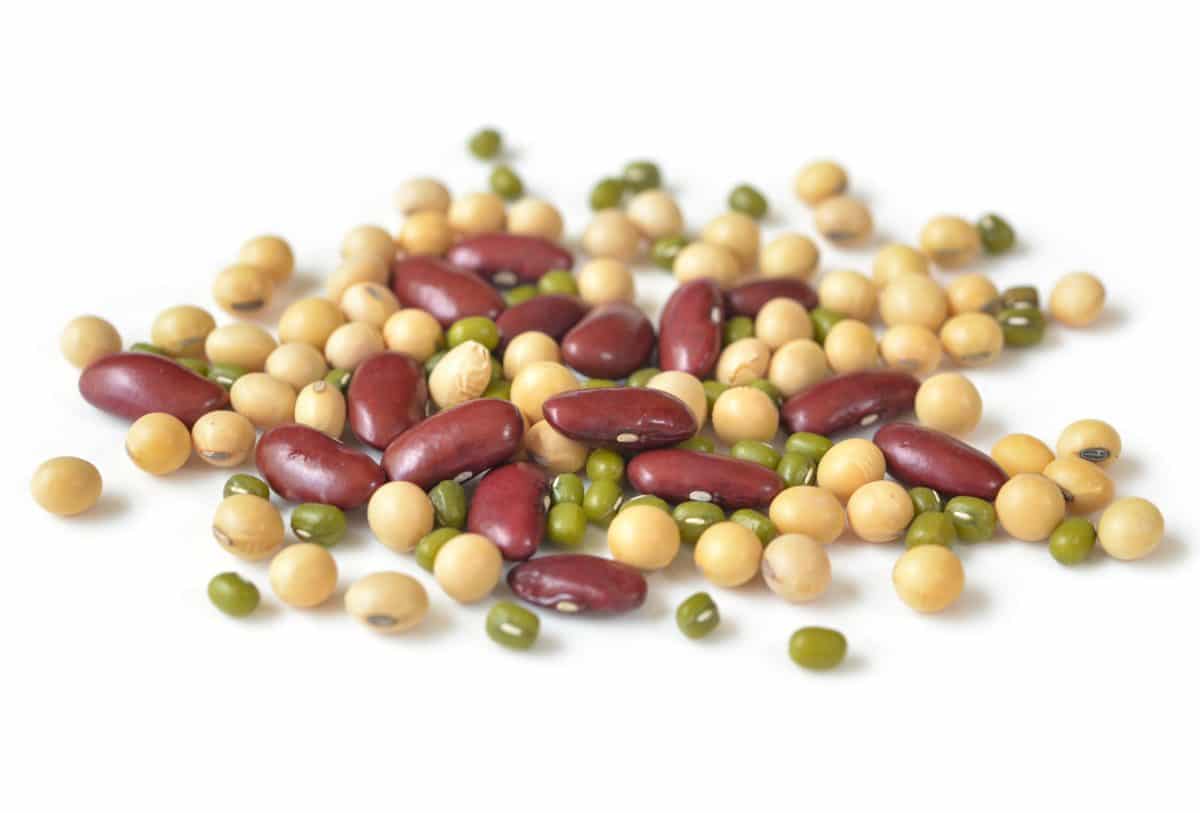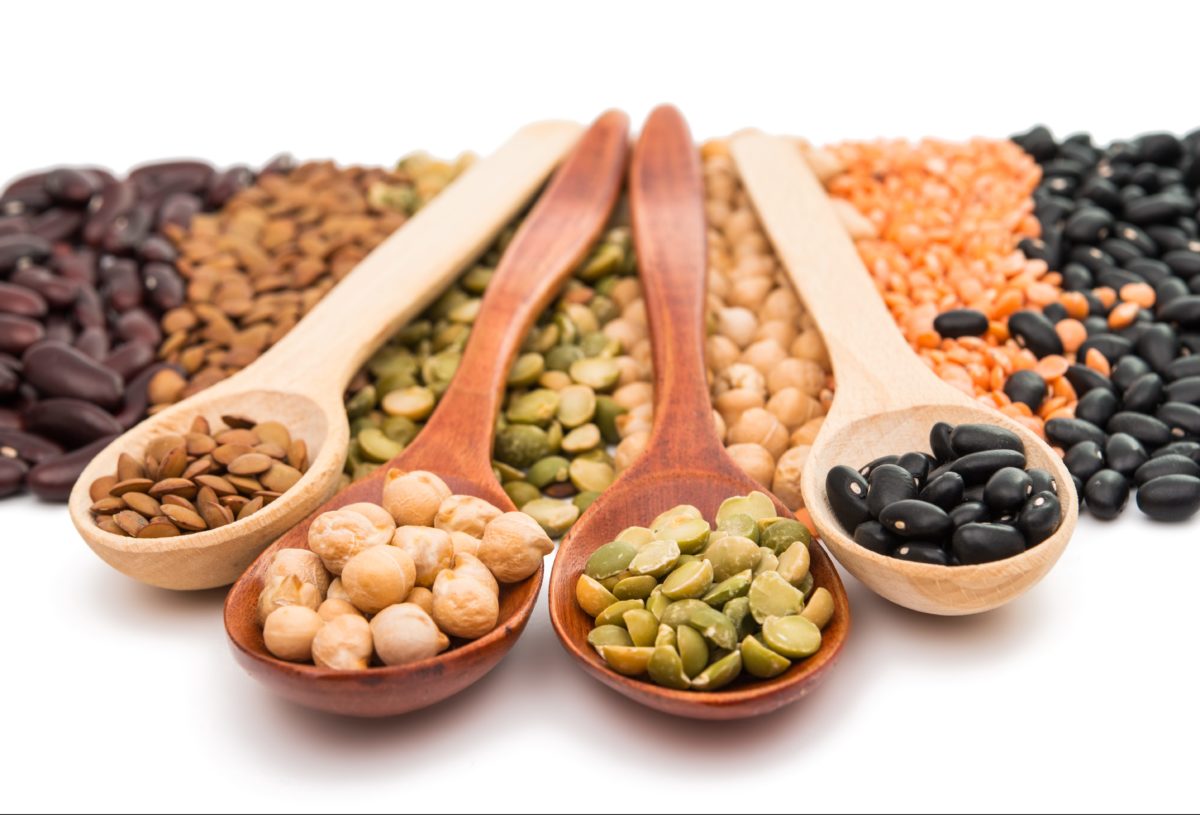Vegans have long known that many splendid dishes can be created when you start with beans, nuts and seeds. And the popularity of these protein power foods is starting to grow. As more people embrace “plant-based” foods as part of their diet, they are eating a wider variety of delicious meals, and seeing plenty of health benefits too. Here’s what you need to know about adding more beans, nuts and seeds to your diet.
Variety!
Many cultures rely heavily on beans, nuts and seeds. Chinese and Japanese cuisines focus on the versatile soybean, and include soy-based foods like tofu, tempeh, edamame, soy sauce and miso in salads, soups and main courses. From tofu stir-fries to miso soup, these Asian dishes allow soy to really shine.
Chickpeas or “ceci” are popular in Italy, as are cannellini beans. Whether added to minestrone soup, pasta, or used as a side dish, beans add texture and flavor to many regional dishes. Italy is also known for its pesto, which would be nothing without pine nuts.
Nuts, seeds and beans are all part of Middle Eastern cuisine. Chickpeas are the staple ingredient in falafel, while chickpeas and sesame seeds are used in hummus. Nuts like almonds and pistachios are used in main courses and decadent desserts.
Mexican foods often incorporate black beans. Many Thai dishes use peanuts. Lentils are a favorite in India, where they are used to make dal, curries and delicious soups. Fill your pantry with seeds, nuts and beans, and you can make many wonderful dishes.

Health!
Beans, nuts and seeds are all plant-based sources of protein. They form the foundation of the Mediterranean diet, which is widely cited as the best eating plan to help prevent heart disease, stroke, diabetes and dementia. Along with vegetables, fruit, whole grains, and olive oil, the plant-based proteins round out this healthy diet. Beans are loaded with fiber, which is one of the reasons they are so healthy. In addition to keeping you ‘regular,’ fiber can help stabilize cholesterol and blood pressure levels. Nuts and seeds are well-known for their healthy fat, and should be used to replace less healthy trans fat in the diet. Nut butters are a better option for toast than hard margarine!
Beans, nuts and seeds also contain a unique mix of vitamins, minerals and antioxidants, which work synergistically to protect your health.
Cook!
In our cookbook Nourish: Whole Food Recipes Featuring Seeds, Nuts and Beans, we have used one of the title ingredients in every recipe, teaching readers how to get more plant-based protein in their diet in the foods they eat. While not a vegan cookbook, most recipes in it are plant based.
Beans are an inexpensive, nutritious ingredient, and they are easy to cook – but do take time. When life’s demands don’t allow you to cook beans from scratch, the easy solution is to buy canned beans. We recommend versions that have no added salt/sodium and that do not contain the chemical Bisphenol A (BPA) in the lining of the can. Some canned beans can contain up to 1,000 mg of sodium per cup. When you use beans with no added salt, you are in control of how salty your final dish will be.
For convenience, you can freeze your leftover beans. Simply place them into a freezer-safe bag or container, and label them with the date and name of ingredient. They should last for six months in the freezer. Your best bet is to freeze beans in one and two cup amounts. Then you can add them frozen to soup or stew, and they thaw as the soup/stew cooks.
Nuts and seeds are ready to use as-is, right out of the container. It’s nice to keep a mix of different nuts and seeds in your pantry – and nut butters, too. We like to keep almonds, pistachios, walnuts, hemp seeds, pumpkin seeds and sesame seeds on-hand – they are perfect for making granola, garnishing salads, crusting fish, adding to pasta or sprinkling into dessert.
Toasting nuts and seeds intensifies their flavor and enhances their appearance, so it’s always an option. You can easily toast nuts on the stovetop in a cast iron skillet or frying pan. Over medium heat, stir nuts or seeds so they do not burn. Nuts require 5-6 minutes, seeds and small pine nuts about 3 minutes. You can also toast nuts in the oven on a parchment-lined baking sheet. Set the oven to 177°C (350°F) and toast nuts for about 10 minutes and seeds for about 7 minutes (stirring once), watching carefully to ensure they don’t burn.
Taste!
If you are new to the world of beans, nuts and seeds, try incorporating them into dishes that you are familiar with. They all taste great as salad toppers, for instance. Both seeds and beans are in our Colorful Quinoa Salad. Our Underground Stew is a warming dish on a chilly day. Named for its inclusion of foods that grow in the earth, it’s a hearty mix of peanuts, parsnip, carrot, celery root and sweet potato. ![]()
